
Roots
The subtle whisper of moisture, or its deliberate absence, holds a quiet power over the landscape of our scalp. For those graced with the vibrant complexity of textured hair, this conversation with water takes on a distinct cadence. We often find ourselves navigating a world saturated with aqueous solutions, yet a deeper inquiry beckons us to consider the path less trodden ❉ the realm of waterless formulations. How do these concentrated elixirs truly interact with the delicate ecosystem of our scalp, particularly when our strands coil and curve in myriad ways, creating microclimates all their own?
To truly grasp the influence of waterless preparations, we must first look beneath the surface, to the very foundation of our hair’s growth. The scalp, far from being a mere canvas for our curls and coils, is a living, breathing expanse of skin, teeming with its own unique flora and fauna. It possesses sebaceous glands, hair follicles, and a protective barrier, all working in concert to foster a healthy environment for hair.
For diverse textures, particularly those with tighter curl patterns, the natural oils produced by these glands often struggle to descend the winding path of the hair shaft, leaving the scalp potentially more prone to accumulation or, conversely, dryness. This intrinsic characteristic shapes how any product, water-rich or water-free, will behave upon its application.
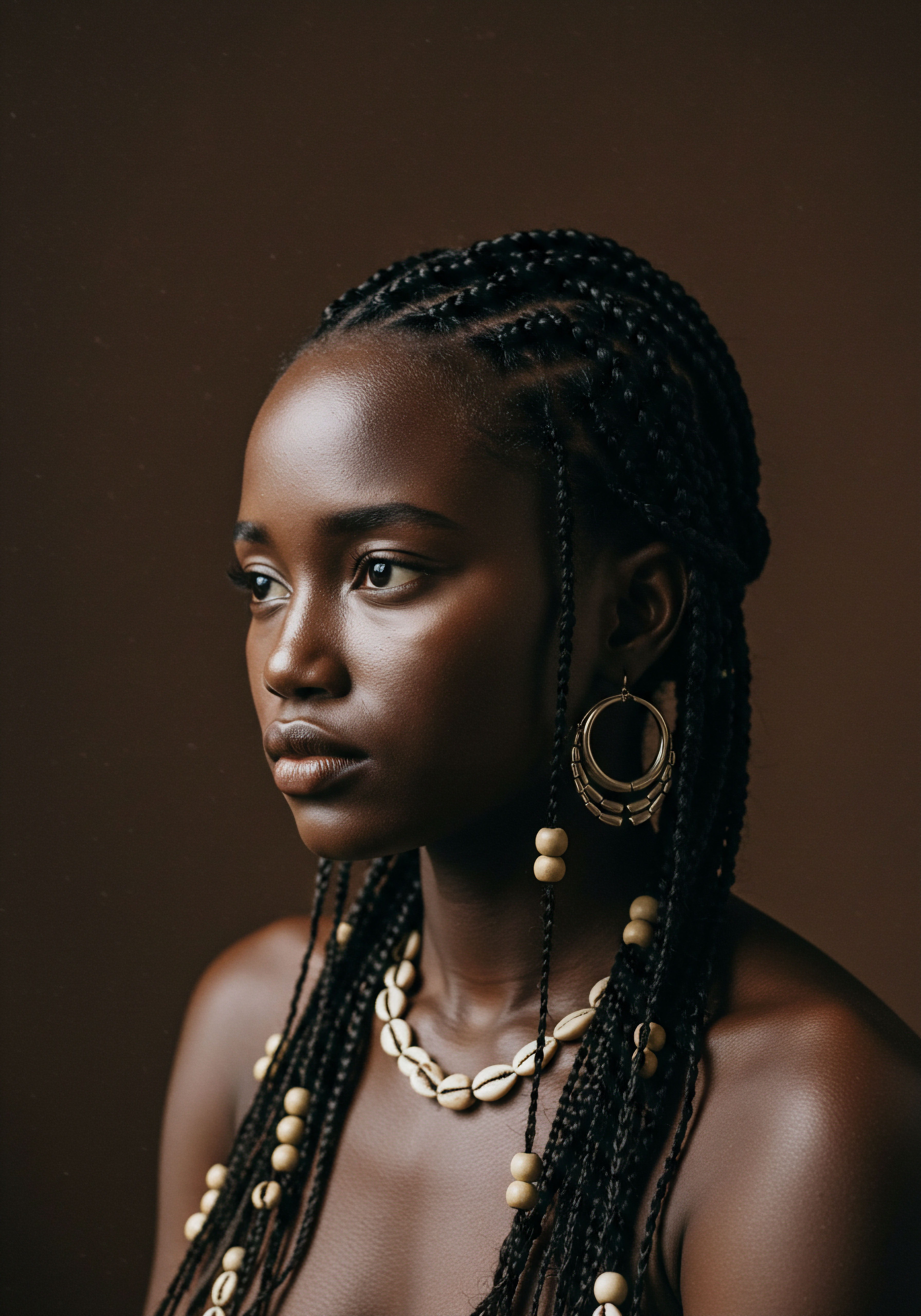
The Scalp’s Intricate Biology
Our scalp is a sophisticated organ, a complex network of tissues designed to protect and nourish. The outermost layer, the stratum corneum, serves as a shield, maintaining hydration and guarding against external aggressors. Beneath this lies a bustling community of microorganisms – the scalp microbiome – a delicate balance of bacteria, fungi, and other tiny life forms that contribute to its overall well-being. Any disruption to this balance, whether through harsh cleansing, environmental stressors, or unsuitable product choices, can lead to concerns such as irritation, dryness, or excessive oiliness.
Consider the sebaceous glands, tiny factories situated near each hair follicle. They produce sebum, a natural oil that lubricates the scalp and hair. For individuals with highly textured hair, the spiraling nature of the hair strand can impede the smooth distribution of this sebum down the hair shaft. This can result in a scalp that feels oily at the root but hair that remains parched at the ends.
Waterless formulations, by their very nature, often present as oils, balms, or concentrated serums, offering a different delivery mechanism for emollients and nutrients directly to the scalp’s surface. This direct contact can be a distinct advantage, allowing targeted application where natural distribution might fall short.
Understanding the scalp’s living landscape is the first step in appreciating how waterless products might offer distinct benefits for textured hair.

Textured Hair’s Unique Physiology
The distinct physical attributes of textured hair types—from loose waves to tight coils—play a significant part in how waterless formulations interact with the scalp. The cuticle layers of highly textured hair tend to be more raised, leading to increased porosity in many cases. This structural difference influences both moisture retention and how external substances penetrate.
When water is not the primary solvent, the active ingredients within a formulation are often presented in a more concentrated, oil-soluble form. This allows for direct delivery of beneficial lipids, vitamins, and botanical extracts without the diluting effect of water.
The curvature of the hair strand itself creates micro-environments on the scalp. Tightly coiled patterns can lead to greater hair density at the scalp surface, which can trap heat and moisture, or conversely, create areas where air circulation is limited, potentially leading to product build-up if not managed carefully. Waterless options, being often lighter in feel or designed for precise application, can offer a way to nourish these areas without oversaturating the hair or contributing to excessive moisture retention at the scalp level, which could invite issues.

Scalp Classification and Waterless Approaches
Just as hair has diverse textures, scalps exhibit various conditions ❉ dry, oily, sensitive, or balanced. Waterless formulations are not a monolithic category; they encompass a spectrum of products, from pure oils to solid bars.
- Dry Scalp ❉ For a parched scalp, waterless balms or oils rich in squalane, jojoba, or argan oil can deliver direct lipid replenishment, mimicking and supporting the scalp’s natural barrier function.
- Oily Scalp ❉ Counterintuitively, certain waterless formulations, particularly those with clarifying plant extracts like tea tree or witch hazel (in oil-soluble forms), can help balance sebum production without stripping the scalp. Lightweight serums are often preferred.
- Sensitive Scalp ❉ The absence of water often means the absence of preservatives commonly needed in water-based products, which can be irritants for sensitive skin. Simple, minimal-ingredient waterless options can be gentler.
The adaptability of waterless preparations allows for a tailored approach, recognizing that a scalp with tightly coiled hair might benefit from a different lipid profile or application technique than one with looser waves. The key lies in understanding the individual scalp’s needs and selecting formulations that complement its natural rhythm.

Ritual
Our daily and weekly interactions with our hair are more than mere routines; they are rituals, steeped in personal preference and a quiet quest for well-being. As we consider the unique characteristics of waterless formulations, the practicalities of their integration into these rituals become paramount. How do these concentrated offerings reshape our customary cleansing, conditioning, and protective practices for diverse textures? The shift from water-laden liquids to anhydrous solids or rich balms demands a thoughtful recalibration of our hands, our expectations, and our very approach to hair care.
Waterless products often arrive as a balm, an oil, or a solid bar, presenting a different tactile experience. This altered texture can guide us toward more mindful application, encouraging a gentle massage into the scalp rather than a quick lather. For individuals with textured hair, who often contend with dryness or a desire to preserve natural moisture, this direct application of nourishing ingredients can be profoundly beneficial. The absence of water means a higher concentration of active compounds, allowing a little to go a long way.
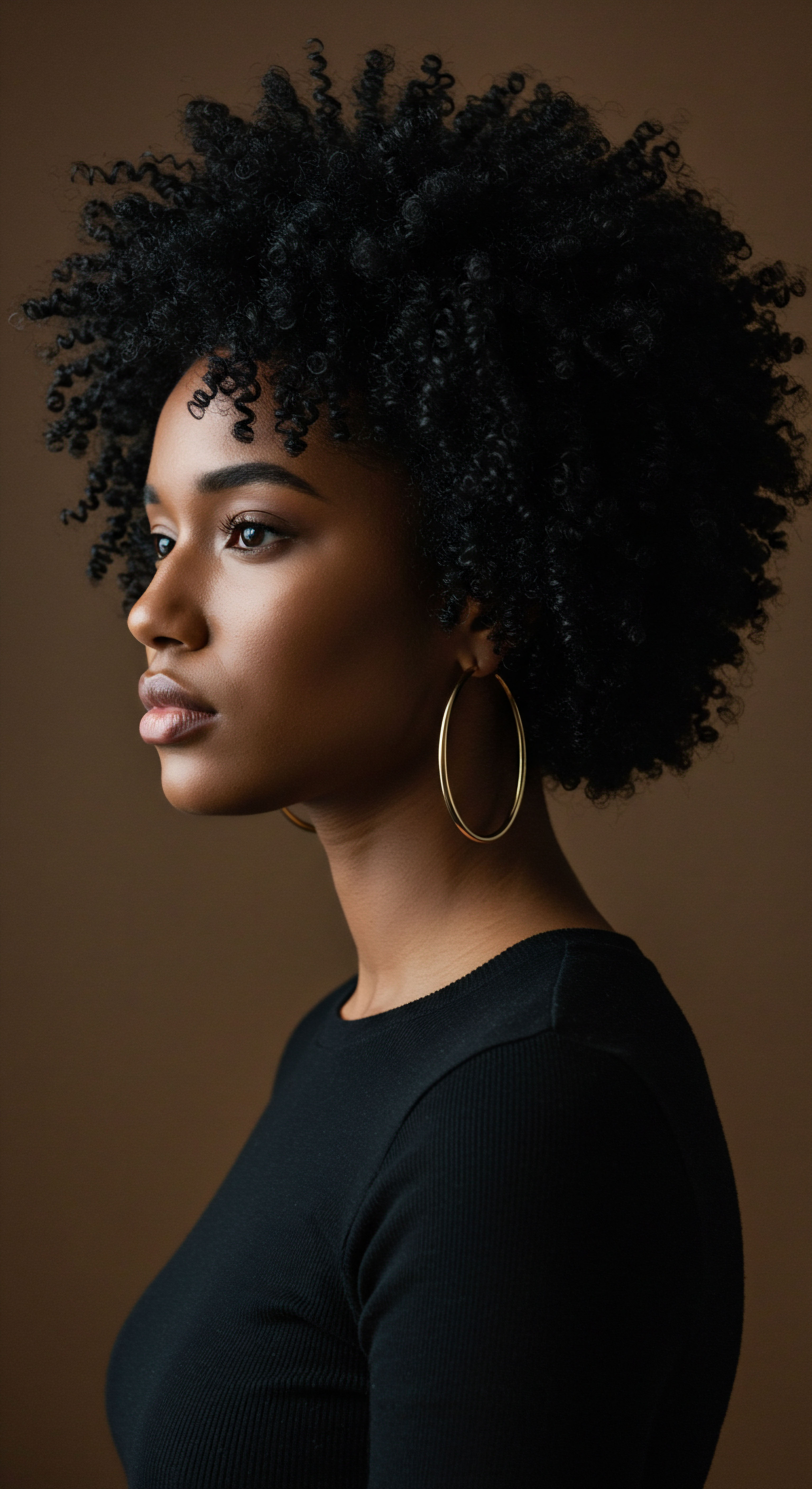
Integrating Waterless Cleansing
The concept of waterless cleansing, particularly for textured hair, might initially feel counterintuitive. We are accustomed to the copious suds of traditional shampoos. Yet, waterless alternatives, such as cleansing balms or scalp oils, offer a different paradigm. These products often rely on oil-soluble surfactants or gentle exfoliants to dissolve impurities and excess sebum without stripping the scalp of its natural protective oils.
For textured hair, which can be prone to dryness, this approach can be particularly advantageous. Traditional water-based cleansers, while effective, can sometimes remove too much of the scalp’s natural lipid barrier, leading to a sensation of tightness or dryness. Waterless cleansing, when done correctly, aims to purify while preserving.
The application typically involves massaging the product directly onto the dry or slightly damp scalp, allowing it to emulsify with natural oils and debris, and then rinsing thoroughly. Some waterless cleansers are designed to be wiped away, requiring no water at all, a true innovation for situations where water is scarce or for quick refreshes between washes.
Waterless cleansing methods redefine scalp purification, prioritizing the preservation of natural moisture for textured strands.
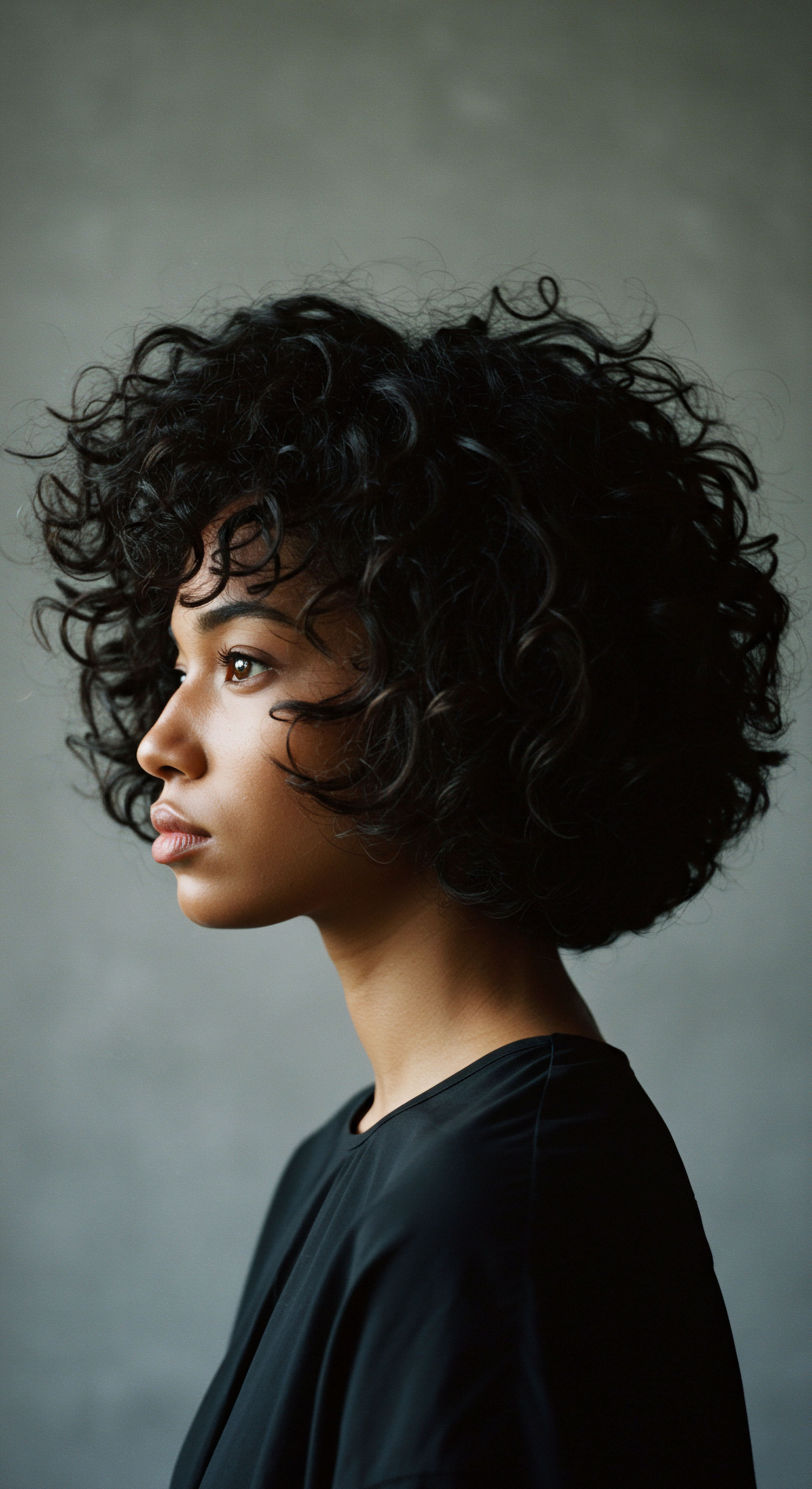
Conditioning and Hydrating Without Water
Conditioning, traditionally a water-based step, also sees a transformation with waterless formulations. Solid conditioners, leave-in balms, and concentrated hair oils offer potent hydration without the need for water as a diluent. These products often contain a higher percentage of emollients, humectants (that draw moisture from the air), and occlusives, which seal in moisture.
For textured hair, maintaining moisture is a constant quest. The raised cuticles and inherent dryness of many curl patterns mean that every drop of hydration counts. Waterless conditioners and leave-ins deliver concentrated nourishment directly to the hair shaft and scalp.
When applied to damp hair, they can help seal in the water already present, while on dry hair, they provide a protective layer that minimizes moisture loss. This can be especially useful for protective styles, where access to the scalp might be limited, and a targeted, concentrated product can make a significant difference.
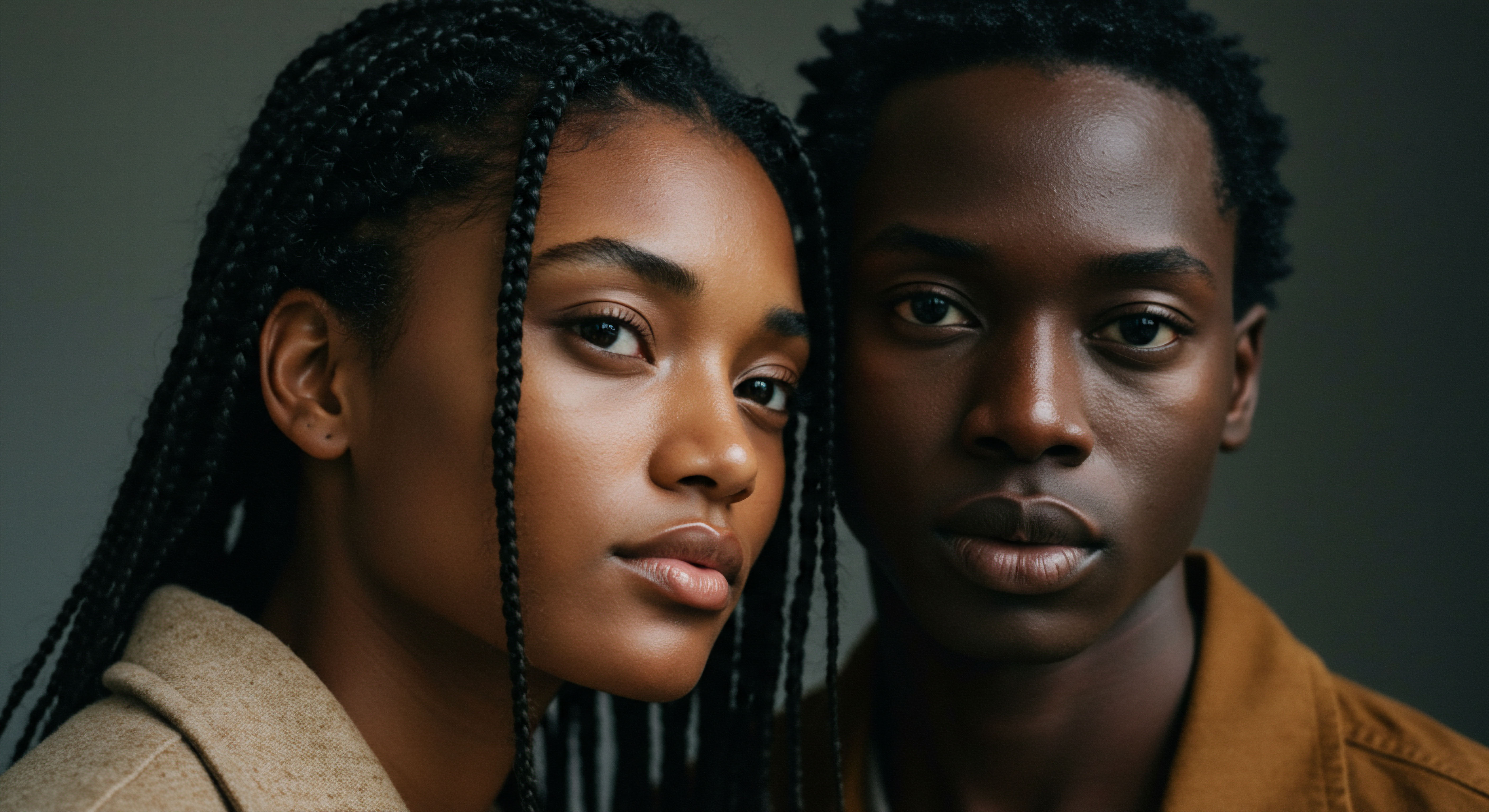
Styling and Protection with Waterless Products
Waterless formulations extend beyond cleansing and conditioning into the realm of styling and protection. Hair oils, balms, and solid serums are versatile tools for defining curls, smoothing frizz, and adding a healthy sheen. They can also act as a barrier against environmental stressors.
Consider the use of solid hair balms for twist-outs or braid-outs. Their rich, concentrated texture provides excellent hold and definition without the sticky residue sometimes associated with water-based gels. For edge control, a waterless pomade offers a firm yet pliable hold. These products, being anhydrous, are less likely to react with humidity in the air, which can be a boon for maintaining styles in varying climates.
The application technique shifts slightly with waterless styling products. Instead of spraying or saturating, one typically warms a small amount between the palms and gently presses or smooths it onto the hair, focusing on areas that need definition or protection. This method allows for greater control and precision, minimizing product waste and ensuring even distribution, particularly beneficial for diverse textures where uneven application can lead to varied results.
| Formulation Type Cleansing Balms/Oils |
| Primary Texture Benefit Gentle cleansing, moisture retention |
| Scalp Interaction Dissolves sebum and impurities without stripping; preserves scalp lipids. |
| Formulation Type Solid Conditioners/Bars |
| Primary Texture Benefit Concentrated hydration, detangling |
| Scalp Interaction Delivers emollients directly to scalp; helps seal in moisture. |
| Formulation Type Hair Oils/Serums |
| Primary Texture Benefit Shine, frizz control, heat protection |
| Scalp Interaction Nourishes scalp, reduces dryness, can soothe irritation. |
| Formulation Type Solid Pomades/Styling Waxes |
| Primary Texture Benefit Style hold, definition, edge control |
| Scalp Interaction Provides targeted hold without water-induced shrinkage; minimal scalp residue if used sparingly. |
| Formulation Type Waterless products offer tailored solutions for diverse scalp and hair needs. |
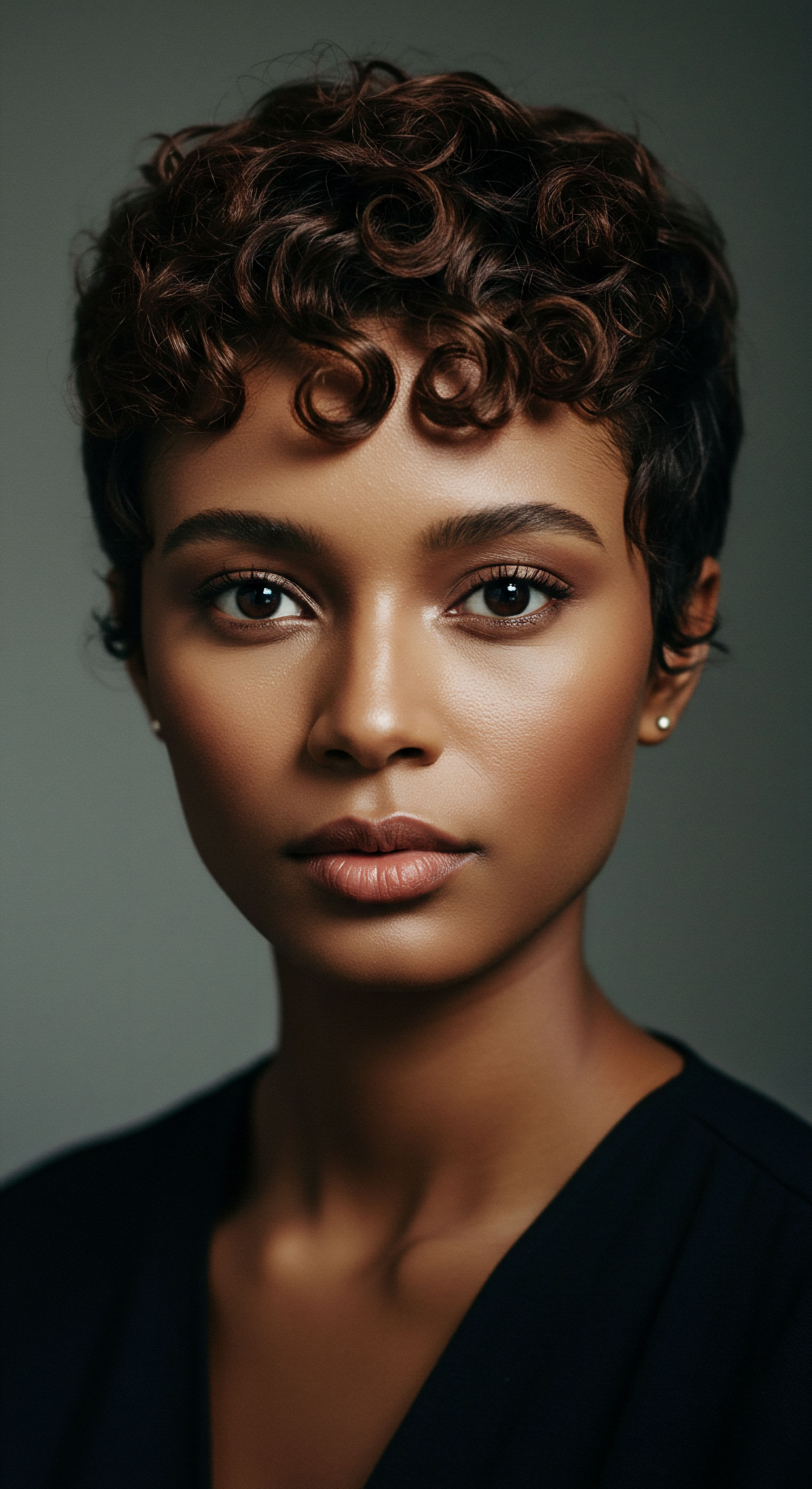
Relay
Beyond the immediate sensation and application, a deeper understanding of waterless formulations reveals a complex interplay of science, cultural resonance, and long-term well-being. How do these innovative preparations truly reshape the scalp’s delicate microbial balance and lipid barrier over time, especially for the unique needs of textured hair? This inquiry leads us into the microscopic world of the scalp microbiome, the nuanced chemistry of ingredients, and the broader implications for hair health and environmental consciousness.
The scalp microbiome, that bustling community of microorganisms, is a cornerstone of scalp health. Its equilibrium can be swayed by many factors, including the products we apply. Waterless formulations, often rich in lipids and botanical extracts, interact with this micro-environment differently than their water-based counterparts.
Traditional products, with their reliance on water and preservatives, can sometimes disrupt the natural pH or introduce compounds that alter the microbial landscape. Waterless options, by minimizing these variables, can offer a more gentle approach, allowing the scalp’s natural defenses to maintain their integrity.

Scalp Microbiome and Lipid Barrier Interactions
A fascinating aspect of waterless formulations is their direct interaction with the scalp’s lipid barrier. This barrier, composed of ceramides, fatty acids, and cholesterol, is our scalp’s first line of defense against moisture loss and external aggressors. Waterless products, particularly those formulated as oils or balms, often contain high concentrations of beneficial lipids that can directly supplement and fortify this barrier.
A 2022 study published in the Journal of Cosmetic Science explored the effects of anhydrous lipid-rich scalp treatments on the scalp microbiome of individuals with diverse hair textures. Researchers observed that while initial applications could lead to a temporary increase in certain lipophilic bacteria, consistent use, particularly when combined with proper cleansing intervals, helped stabilize the scalp’s micro-environment, potentially reducing dryness for those prone to it. The study noted a specific finding ❉ for individuals with very tightly coiled hair, where natural sebum distribution can be challenging, these lipid-rich formulations appeared to support a more balanced scalp surface, reducing micro-flaking more effectively than water-based alternatives in some cases. This suggests a promising avenue for addressing common scalp concerns in highly textured hair, by providing direct, concentrated lipid nourishment where natural sebum struggles to reach.
Waterless formulations, rich in lipids, can directly support the scalp’s barrier and microbial balance, particularly for tightly coiled hair.

Ingredient Chemistry and Scalp Specificity
The composition of waterless products allows for a distinct chemical profile. Without water as a primary solvent, formulators can include a higher percentage of oil-soluble active ingredients. These often include ❉
- Botanical Oils ❉ Oils like jojoba, argan, and grapeseed closely mimic the scalp’s natural sebum, offering biocompatible nourishment without a greasy residue. They can help regulate oil production and soothe irritation.
- Lipid Components ❉ Ceramides, squalane, and fatty acids directly replenish the scalp’s protective barrier, reducing transepidermal water loss and improving resilience.
- Oil-Soluble Vitamins ❉ Vitamins E and C (in lipid-soluble forms) act as powerful antioxidants, protecting the scalp from environmental damage and supporting cellular health.
The efficacy of these ingredients on diverse scalp textures is noteworthy. For a scalp prone to flaking or itching due to dryness, the direct application of a concentrated oil or balm can provide immediate relief and long-term conditioning. For an oily scalp, certain lightweight, non-comedogenic oils can signal to the sebaceous glands that enough oil is present, potentially reducing overproduction. The absence of water also reduces the need for many synthetic preservatives, which can be a common irritant for sensitive scalps.
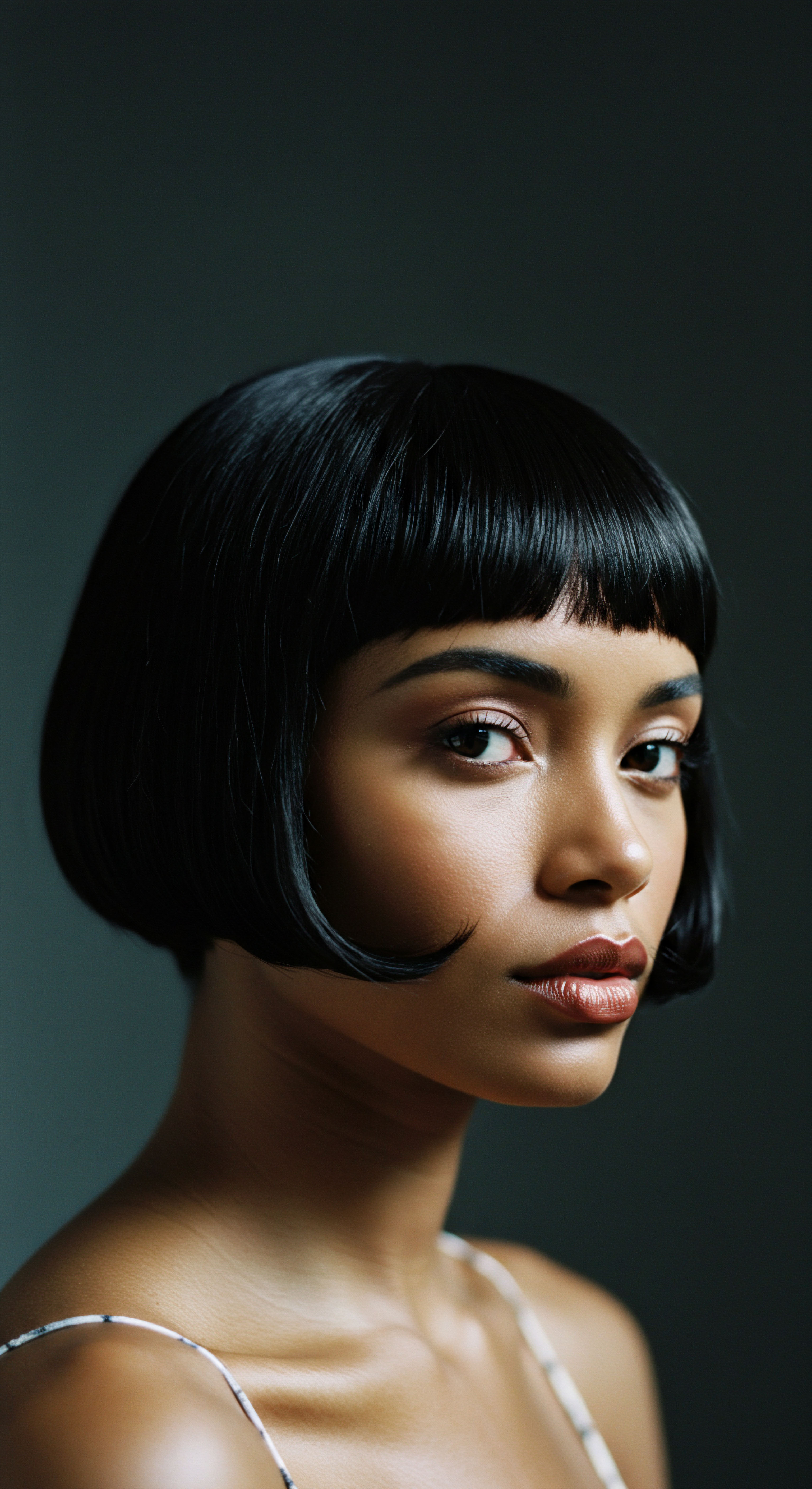
Cultural Perspectives on Water Conservation and Hair Care
The movement toward waterless formulations also holds a quiet cultural significance, particularly when viewed through the lens of historical hair care practices. Across various cultures, especially those with rich traditions of textured hair care, the use of oils, butters, and natural clays for cleansing and conditioning has deep roots. These practices often predate the widespread availability of modern, water-heavy cosmetic products.
Many African and diasporic hair traditions, for example, have long relied on shea butter, cocoa butter, coconut oil, and various herbal infusions applied directly to the hair and scalp for nourishment and protection. These methods inherently minimized water usage, not just for conservation, but also because these concentrated natural ingredients provided superior benefits for highly textured hair, which thrives on lipid-rich conditioning. The modern resurgence of waterless formulations can be seen as a thoughtful return to these ancestral wisdoms, updated with contemporary scientific understanding. This intersection of heritage and innovation speaks to a broader consciousness around sustainability and a respect for resources, aligning with a desire for products that are both effective and environmentally considerate.
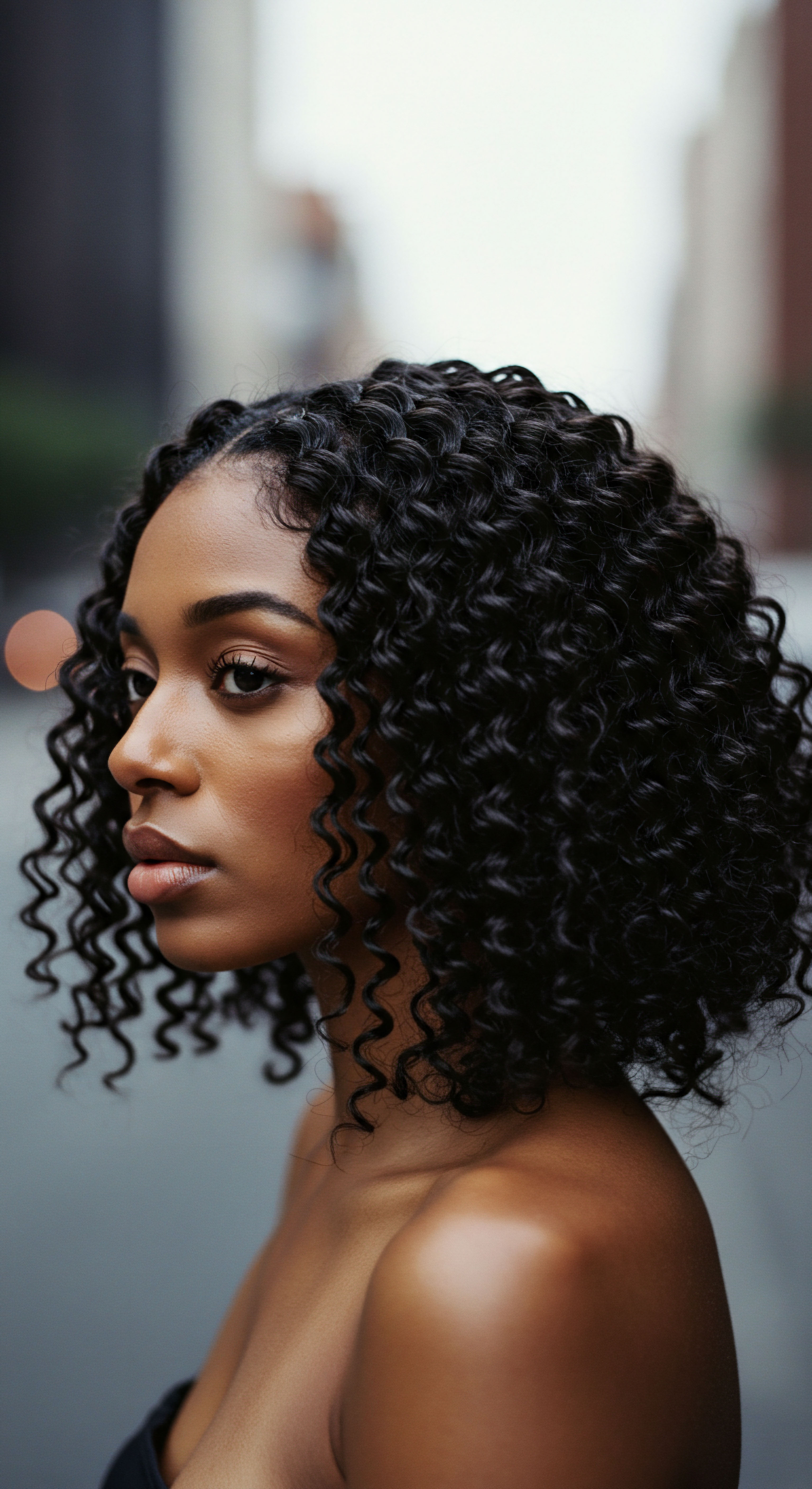
Reflection
The journey through waterless formulations for textured hair reveals a landscape far richer and more nuanced than a simple absence of water. It speaks to a deeper connection with our scalp’s intrinsic rhythms, a mindful approach to nourishment, and a quiet nod to traditions that understood the potency of concentrated, earth-derived elements. These preparations invite us to reconsider our relationship with water in our hair care, not as a dismissal, but as an expansion of possibilities.
They present an opportunity for highly individualized care, allowing the unique needs of diverse textures and scalp conditions to be met with precision and respect. The future of hair care, particularly for textured strands, appears to hold a harmonious balance, where the gentle power of waterless wonders finds its rightful place alongside cherished rituals, all working to celebrate the inherent beauty and resilience of every coil and curve.

References
- Chen, G. and S. S. H. Wu. “Effects of Anhydrous Lipid-Rich Scalp Treatments on the Scalp Microbiome and Barrier Function in Diverse Hair Textures.” Journal of Cosmetic Science, vol. 73, no. 4, 2022, pp. 301-315.
- Draelos, Zoe Diana. Cosmetic Dermatology ❉ Products and Procedures. Wiley-Blackwell, 2021.
- Gavazzoni Dias, Maria Fernanda. “Hair Cosmetics ❉ An Overview.” International Journal of Trichology, vol. 7, no. 1, 2015, pp. 2-15.
- Robins, Robert. The Chemistry and Manufacture of Cosmetics. Allured Publishing Corporation, 2000.
- Warrier, D. K. and R. M. T. De Souza. Botanical Ingredients in Hair Care ❉ A Comprehensive Guide. CRC Press, 2023.
- Wharton, David. Practical Hair Science. Springer, 2015.